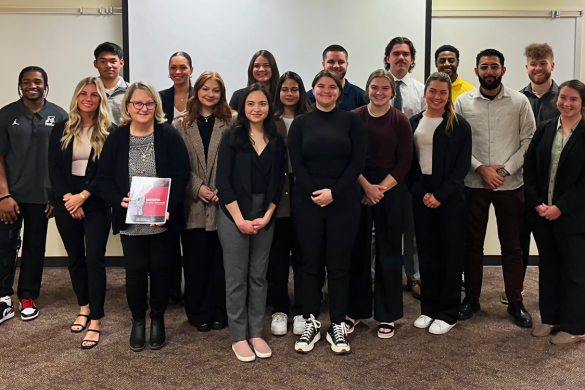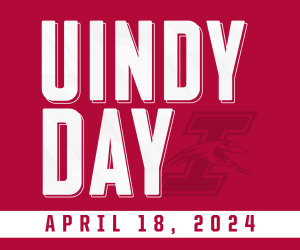The University of Indianapolis, Fifth Third Bank and the Local Initiative Support Corporation recently held a press conference and bus tour to announce a Quality of Life Plan to determine the best ways to help revitalize the area.
The Quality of Life Plan area of study includes a four-and-a-quarter square mile area of the Southside bounded by Raymond Street to the north, I-65 to the east, I-465 to the south and Meridian Street to the west. The area affected by the plan includes University Heights, Carson Heights and the Garfield Park area, according to a Fifth Third Bank press release.
This 18-month process will get neighbors involved in a grassroots effort to determine what about the area needs to be changed and how they want to change it, according to Associate Vice President of Community Relations and Special Assistant to the President David Wantz. A $100,000 grant from Fifth Third Bank of Central Indiana will fund the Quality of Life study, according to the release.
Deputy Director of LISC Tedd Grain said that Quality of Life plans typically take more than a year to develop. He said that this time frame allows the planning process to involve all of the necessary neighborhood stakeholders to have a voice in the process.
LISC Senior Program Officer Thomas Orr said the stakeholders, which include residents and business owners, will be a part of a “congress” where they will come together to help plan the process and check up on what is happening with the plan.
Orr said that community groups will own goals of the plan and work to make sure they are carried out.
A community organizer will oversee the implementation of the plan and get the community to come out and help with the process. Grain said that LISC hopes that the plan will give the community a sense of direction, momentum and accountability.
As the anchor institution, UIndy has several roles to play in the process. The community organizer will be integral to the process and will be employed by UIndy, according to Orr. In addition, Grain said that students and faculty also are invited to help out with the plan.
Wantz said that the specifics of the plan are still unfolding, but those involved with the plan will be inviting neighbors to participate in the planning process over the next few months. The first congress will convene in the summer to discuss issues in the community that the plan should address. Wantz gave several examples of improvements that the plan likely could cover, such as walkability, parks, public safety and economic development.
Wantz said there is a good reason for involving the community, as it gives the plan credibility.
“The plan is not imposed on the community but built from the ground up, the rationale being [that] the people tend to support what they help to create,” Wantz said. “It becomes easier to influence others to put services in the area, develop businesses, try innovations, [and] seek grants and to see some of that vision come together because there is a strong unity of sentiment about what needs to be done and in what priority.”
UIndy President Robert Manuel said that the plan, by its grassroots nature, will gain credibility not only with the neighbors themselves but also with the politicians and change makers who can help fulfill the goals the plan will eventually set.
“I hope [the plan] solidifies our voice—meaning the community—and it allows the larger community to talk about the quality-of-life characteristics that are important to them,” Manuel said. “That will give us a certain amount of confidence to present these ideas at the city and state level for economic reinvestment and redevelopment.”






